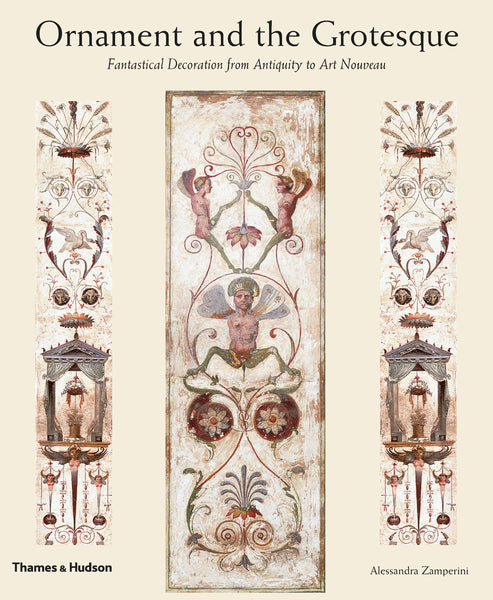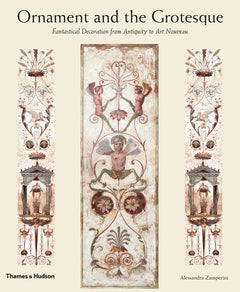Access Denied
IMPORTANT! If you’re a store owner, please make sure you have Customer accounts enabled in your Store Admin, as you have customer based locks set up with EasyLockdown app. Enable Customer Accounts

Ornament and the Grotesque
Fantastical Decoration from Antiquity to Art Nouveau
Out of Stock- Regular price
- $110.00
- Sale price
- $110.00
- Regular price
-
- Unit price
- / per
Reveals the key periods and influences that shaped grotesque ornament, from its origins in Roman art to Art Nouveau in the late 19th century
When Nero's Domus Aurea was inadvertently rediscovered in Rome at the end of the 15th century, its sumptuous interiors not only sparked renewed interest in ancient culture but revealed an unfamiliar, playful style of classical ornament that captured the imagination of Renaissance artists. By that time this fabulous palace had long been covered with earth, and for the first explorers it was like entering a series of caves or 'grottoes', which is why they called the style of the painting on the walls and ceilings 'grotesque'. Far removed from the formal language of traditional classical ornament, what they saw was something essentially decorative and only semi-serious: parodies of classical mythology, fantastic hybrid monsters, men hatching out of eggs, images of perverse eroticism, impossible architectural visions, giant butterflies, mischievous putti, monkeys, sphinxes and nightmare insects - a whole repertoire of uninhibited imagination where nothing was taboo.
Inspired by this discovery and following the medieval predilection for the fanciful and the monstrous Italian artists, including Perugino, Signorelli and Mantegna, immediately started to copy the style. On the ancient Roman precedent, mythological or allegorical scenes and motifs were arranged symmetrically without any apparent structure in terms of subject matter or scale; the Renaissance artists preferred to impose a vertical format on the loosely connected elements in order to bring a sense of order to the overall compositions.
It was Raphael's decoration of the Vatican Loggie in the early 16th century made the grotesque into a Europe-wide fashion, and it soon became an integral decorative feature of the most lavish residences, incorporating ceramics, textiles and tapestries.
As the grotesque was disseminated throughout Europe, important new stylistic forms emerged and evolved. The first book to reveal this vast treasury, this brings the story up to the late 19th century and shows how it led eventually to Art Nouveau.
Inspired by this discovery and following the medieval predilection for the fanciful and the monstrous Italian artists, including Perugino, Signorelli and Mantegna, immediately started to copy the style. On the ancient Roman precedent, mythological or allegorical scenes and motifs were arranged symmetrically without any apparent structure in terms of subject matter or scale; the Renaissance artists preferred to impose a vertical format on the loosely connected elements in order to bring a sense of order to the overall compositions.
It was Raphael's decoration of the Vatican Loggie in the early 16th century made the grotesque into a Europe-wide fashion, and it soon became an integral decorative feature of the most lavish residences, incorporating ceramics, textiles and tapestries.
As the grotesque was disseminated throughout Europe, important new stylistic forms emerged and evolved. The first book to reveal this vast treasury, this brings the story up to the late 19th century and shows how it led eventually to Art Nouveau.

About the Author
Alessandra Zamperini completed her doctorate at the University of Verona. She has written widely on Italian art history from the fifteenth, sixteenth, and seventeenth centuries. Zamperini is the author of Ornament and the Grotesque: Fantastical Decoration from Antiquity to Art Nouveau, also published by Thames & Hudson.
You May Also Like
View more
This product currently has no recommended items.
Sign up to our Newsletter
Our weekly newsletter is a curated collection of interviews, articles, stunning images and books we think you’ll love. Sign up to get 20% off.
In accordance with our privacy policy, you may unsubscribe at any time.
Invalid password
Enter
- Choosing a selection results in a full page refresh.

